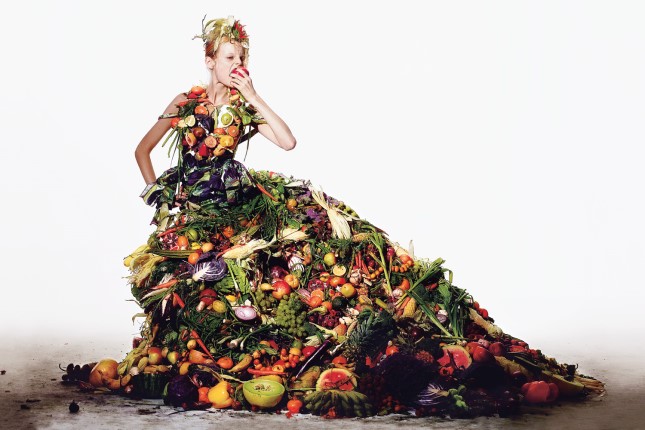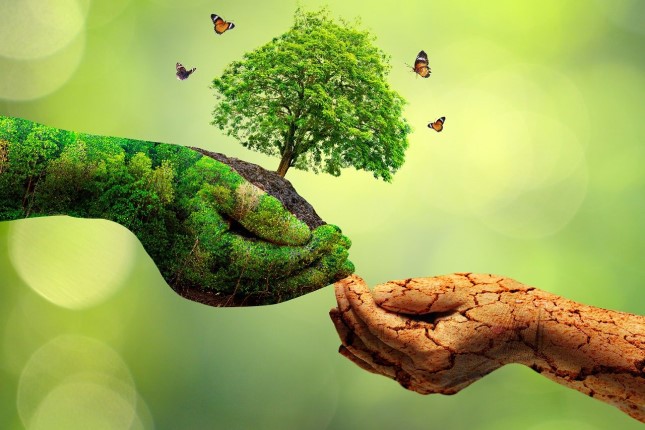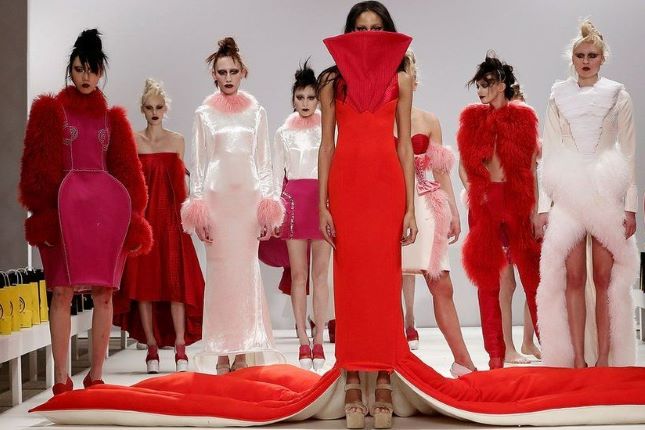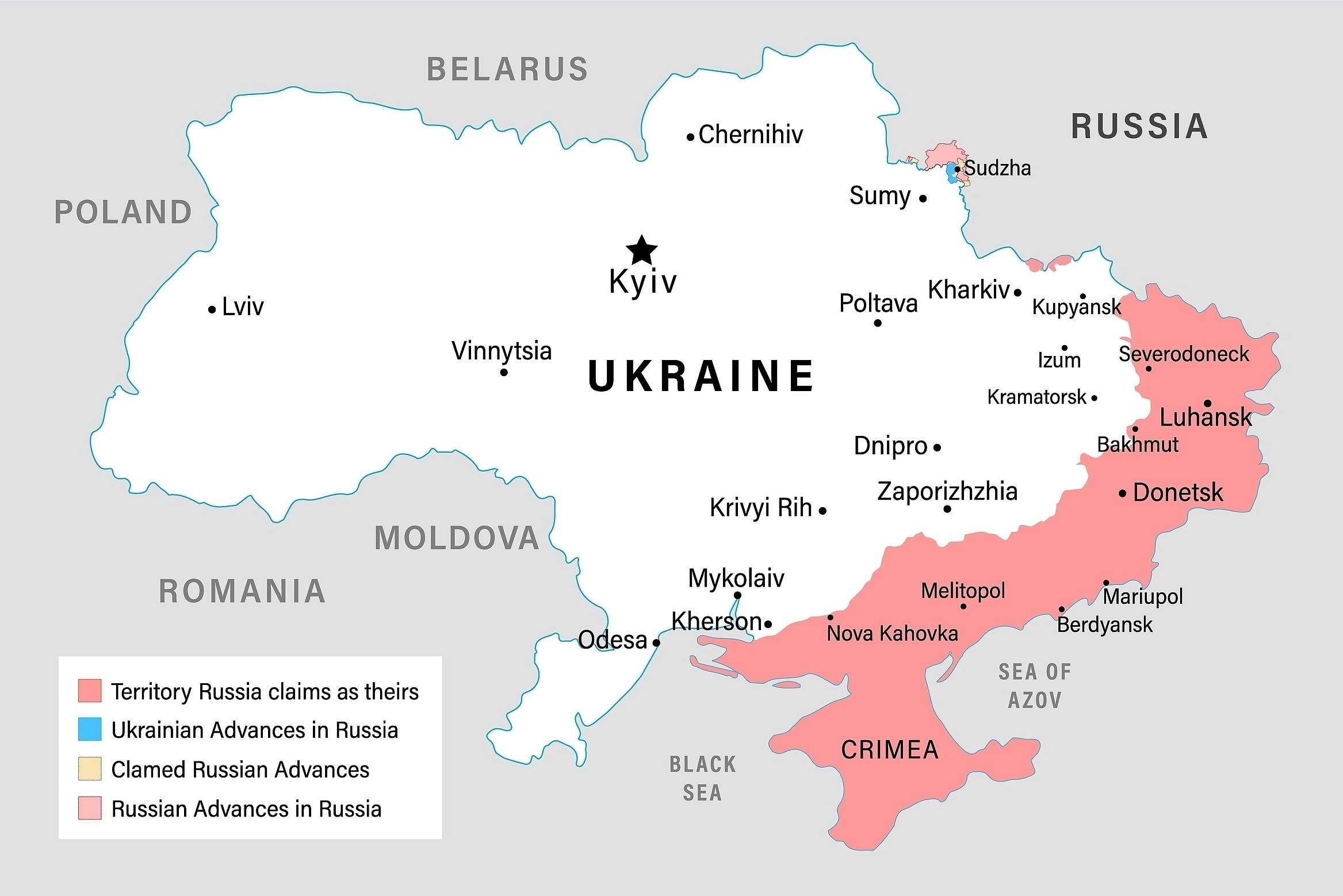The advent of environmentalism as one of the important ideologies of our time inevitably influenced all spheres of our life. The realm of fashion is no exception.
It may seem that the modern fashion industry, working hard to get us to buy more and more new clothes, inherently contradicts the very idea of environmentalism, which usually implies limiting consumerism to slow down global warming and pollution, avoid the worst impacts of climate change, and therefore build hopeful future for our planet.
However, the sustainable fashion industry (also «eco-fashion» or «green fashion») insists that one can care about the planet and look trendy at the same time. And, you have to pay (and overpay) for it.

So, what is sustainable fashion really about? Is it just a rational concept of "environmentally-friendly production", and an industry that assumes a carbon-neutral economic model, or much more than that, a new belief, another layer of the new holistic lifestyle philosophy, which involves a fancy mix of New Age lens of eastern thought and utopian idea of the new better world?
One possible claim of the sustainable fashion movement is a challenge to the capitalist business model of fast fashion, seen by its critics as an exploitation machine, violently grasping animals to be murdered for leather and furs and millions of powerless factory workers in Asia.
In this respect, it can be seen as an attempt to bring postcolonial theory (an interdisciplinary speculative approach to understanding any subaltern experience) into practice through building alternative business settings with a more ecological attitude.
Still, the fair question is if it can find a genuinely global realization, or is it just a bright futurist image produced by a few examples of certified sustainable brands without tangible contribution to the global economics and climate change problem? How do sustainable trends really work today, and what lies behind these new ethics?
Let's outline the main characteristics of emerging popular sustainable fashion brands in their promotion and sale. By what criteria can you determine that you are dealing with sustainable goods? A brand should consider the following list of essentials:
1) garment should be out of organic, secondhand, recycled or regenerative fabrics and with usage of nontoxic dyes;
2) company should attend transparent, ethical supply chains involving carbon-neutral shipping;
3) it should provide recycled and biodegradable or plastic-free packaging;
4) a company must offer something like a donation program for used clothes or have a secondhand department;
5) and last but not least: organic or sustainable trending implies ethical production practices meaning fair, safe and labour standards.
Following each of these points makes developing such a brand tough and expensive. The final product becomes more expensive at every stage of its production, resulting in a much higher price than the same item in the conventional clothing market.
Not to mention the fact that there is a whole superstructure of special regulatory organizations and third-party companies that perform, so to speak, a supervisory and controlling function, while the cost of such certificates confirming that the brand is not harmful to the planet, all living creatures and their employees, sometimes reaches several dozen thousand dollars a year.
Of course, independent designers, new startups or small local companies cannot afford it though they can fairly follow the sustainable trend.
It is assumed that you, as a buyer, in any case, will approach the purchase consciously: you either trust the certified brands, which are advertised by controlling corporations, or you try to find out how the process of manufacturing and delivery of clothes you like. Especially in the case of a small local business, you can rely on talking to its owners and employees and trying to get a deeper understanding of their business ethics.
It is noteworthy that there is still no strict control over the activities of sustainable brands, and the very notion of the ethics of specific actions remains blurred and sometimes functions at the level of intuition of company owners and employees.
While the main point of sustainability remains the transparency of the lens through which we should get a good picture, we still cannot be sure of the quality and ethics of products supplied to the local market of predominantly developing countries with no government support for sustainability. No matter how organic it is, it is still the same market, so it inevitably suffers from fraud.

The main supplier of organic cotton, the basis for all organic fashion, is India, which accounts for half of all organic cotton sold worldwide, joined by China and Turkey.
The idea of organic cotton confronts conventional cotton farms using toxic, environmentally destructive chemicals that kill both nature and farmers dying from exposure to these chemicals.
However, what is presented as organic production is not always what it claims to be. One of the reasons is that external certifying organizations rely on reports made by local experts, and this is where the space for corruption and fraud arises.
Sustainable Ethics and Buddhism
One obvious source of inspiration for the new green marketing is the basic principles of Buddhist and, more broadly, traditional Indian thought, adopted in the course of its expansion into the Western world, which has been very active since the 1960s.
The idea of equality of beings behind the ethics of such a business model is a very Buddhist thing, given the concept of reincarnation.
Or another example. As already mentioned, one of the concepts of sustainable development is the slowing down of progress, so the chain of sustainable production also seeks to transform the category of time: from fast fashion and profit to slow development, production and consumption.
One could say that such a model tries to return time to its subject and turn it to the present moment. It strongly resembles the Buddhist way of thinking, which is elevated to the art of meditation as finding the mind in the here and now.
Buddhism is indeed fashionable in the Western world today. It is developing various kinds of hybrid mix of traditional and yet modern movements such as Mindfulness or the now popular retreat practice of Vipassanā.
By the way, Dalai Lama is a big friend of the ecological movement and even had conversations recently with iconic and controversial eco-activist Greta Thunberg.
And traditional Buddhist terms, such as ignorance (avidyā) or greed (lobha), can be truly adopted to explain the reason why people got their planet polluted and why we have now to fight using the sacred diamond weapon vajra for cutting out the suffering, which we cause to the planet and ourselves with a reasonable conscious mind.
More of it, often sustainable and organic brands naming refers to philosophical concepts such as nonviolence — "Ahimsa" vegan shoes or "Bhava" shoes meaning Sanskrit word bhāva “coming into existence”.
Ideally, sustainable fashion implies a complete transformation of the way we are aware of our position in the world through material things.
Therefore, it is not so much about clothes as it is about the design of our consciousness. However, only time will show if sustainable fashion is a new global serious trend or if it remains another toy for the rich in the western hemisphere.

































